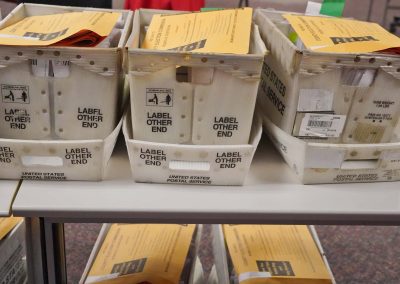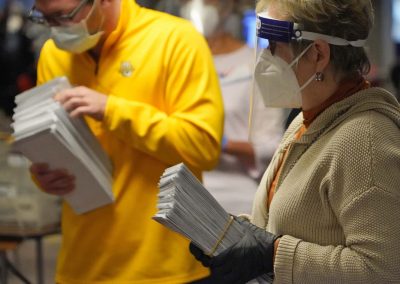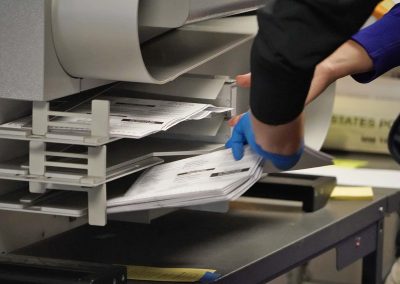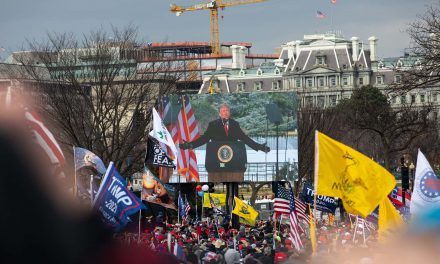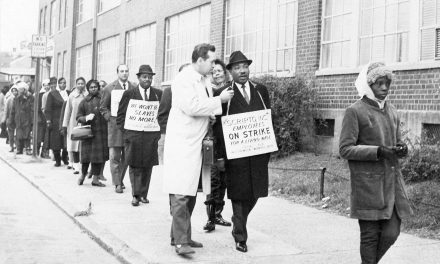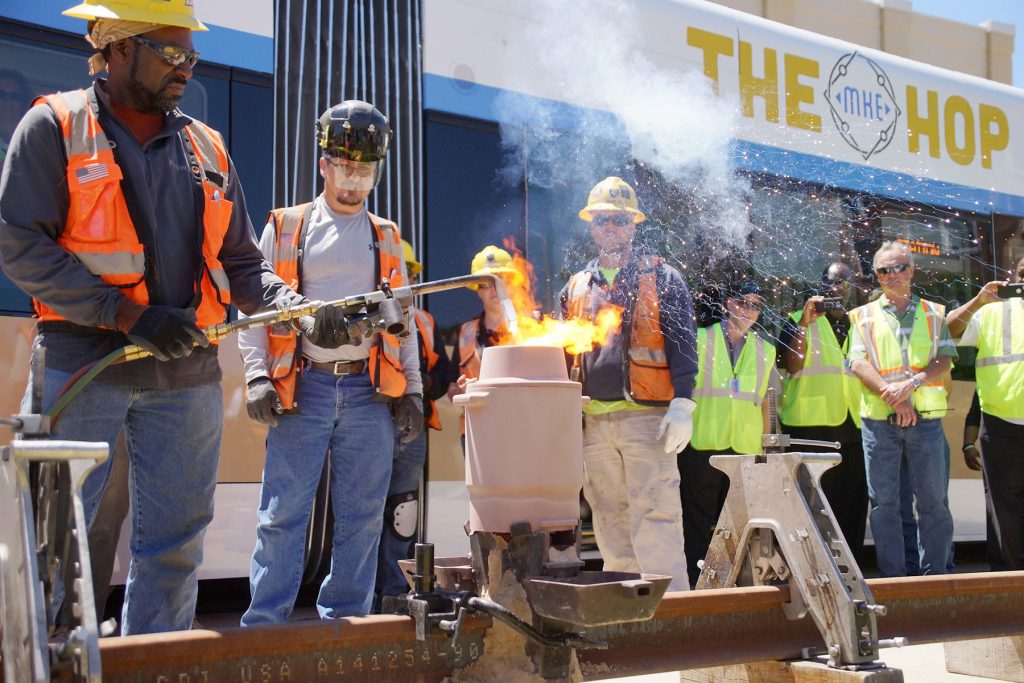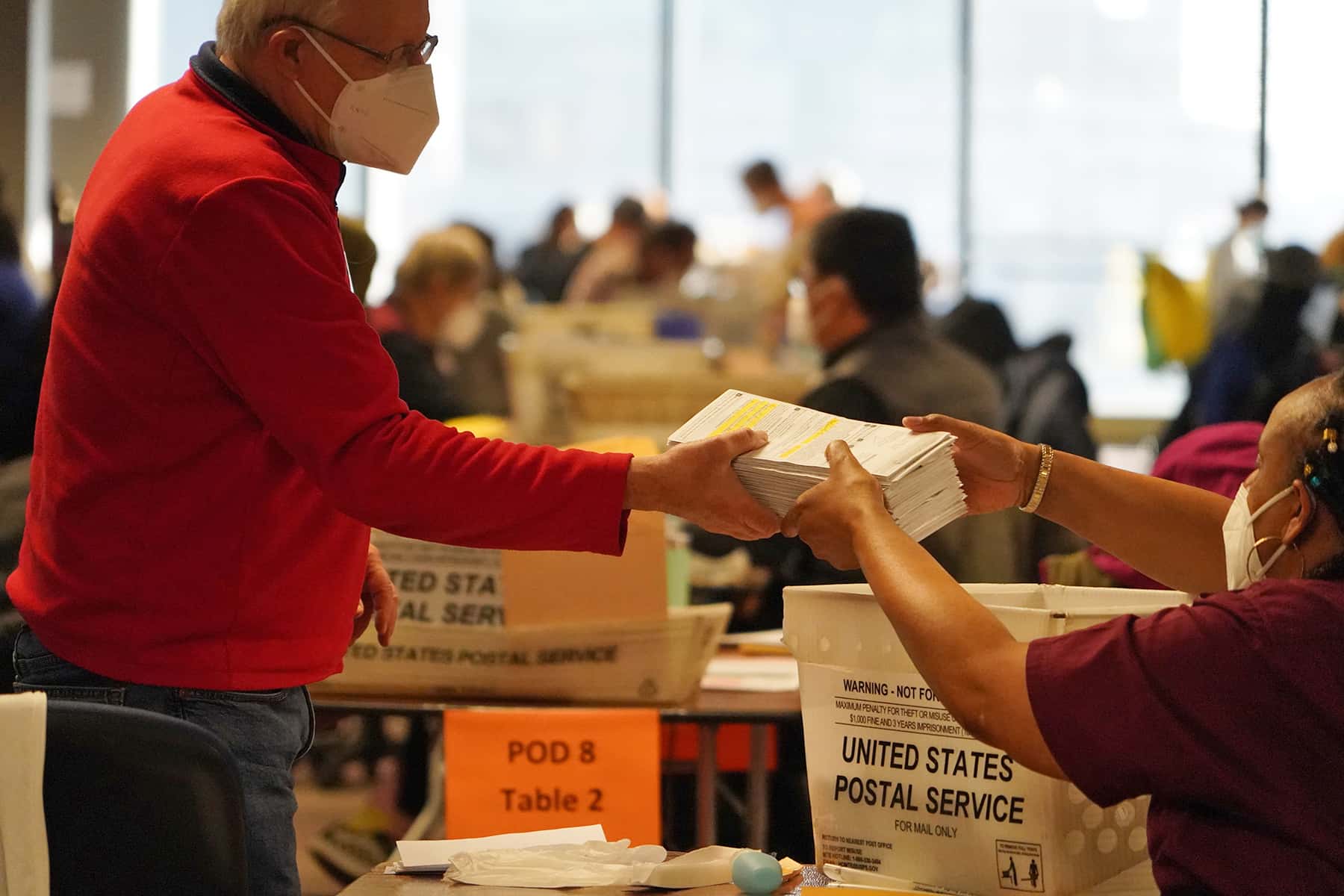
On November 4, several news organizations called the presidential race in Wisconsin for Democratic nominee Joe Biden. That same day, the campaign of President Donald Trump, who trails Biden by under 21,000 votes, announced it would request a recount.
“The President is well within the threshold to request a recount and we will immediately do so,”said Bill Stepien, Trump’s campaign manager, in a statement.
On Twitter, former Republican Wisconsin Governor Scott Walker acknowledged, “If it holds, 20,000 is a high hurdle” for Trump. But Walker also said the canvass of votes that will now take place could reveal issues with the current vote count.
“It will not be easy, but few things worth fighting for are. The President’s team should prepare for a recount after the canvas is done in Wisconsin,” he wrote.
According to the U.S. Election Assistance Commission: “The purpose of the canvass is to account for every ballot cast and to ensure that each valid vote is included in the official election results. The canvass enables an election official to resolve discrepancies, correct errors, and take any remedial actions necessary to ensure completeness and accuracy before certifying the election.”
Here is a general overview of how the recount process works for presidential candidates, per the Wisconsin Elections Commission.
How close do the votes have to be to request a recount?
The second-place finisher may ask for a recount if he or she is within 1 percentage point of the leading candidate. The unofficial results show Biden currently leading Trump by 0.623 percentage points.
What’s the process for requesting a recount?
Candidates must file a petition with the Wisconsin Elections Commission explaining the reason for the recount and in which wards or municipalities they feel a recount is necessary. If specific wards are not identified, the commission assumes the request is for a complete recount. The petition cannot be filed before counties complete their canvass of the votes, nor can it be filed later than 5 p.m. on the first business day after the commission receives the validated counts from the county board of canvassers. In a November 4 press call, Wisconsin’s chief election official, Meagan Wolfe, said Wisconsin’s 72 counties will start canvassing after receiving the unofficial election night results from municipalities. The counties are required to start the process by November 10 and finish by November 17.
What happens when a petition is accepted?
Once a petition is deemed valid, the Wisconsin Elections Commission issues a public notice outlining when and where the recount will be held. The recount can begin no earlier than 9 a.m. on the third day after the county board of canvassers receives notification, and the results of the recount must be submitted to the commission no later than 13 days after the recount is ordered. So if the commission receives the final canvassing results on November 17, the Trump campaign has until 5 p.m. on November 18 to submit a request for a recount. In that case, the recount would be completed by early December.
Who pays for the recount?
The state pays for the recount if the vote difference between the two candidates is 0.25 percentage points or less. If the margin is over that, the cost — estimated by the state elections commission — is to be paid upfront by the candidate who filed the petition. If the recount results in the reversal of the outcome, that money is refunded by the state.
Who conducts the recount?
“In the event of a recount, they are the ones that organize it,” Wolfe told reporters. “A lot of times they’ll bring in help from their local election officials to help conduct that recount, but it does happen at our 72 counties.”
The recount process happens at the county level. Unless otherwise ordered by a court, the county board of canvassers may either hand-count or use voting equipment to tabulate the ballots. They may also choose to hand-count in certain wards, while using voting machines to count in other locations.
Can the recount results be challenged?
Candidates have a right to appeal the outcome of the recount in state circuit court. The appeal is required to be filed within five business days from when the recount is completed. A circuit court ruling can also be appealed.
When was the last recount in Wisconsin?
There was a recount in 2016, when Trump narrowly won the state. The request was made by Green Party candidate Jill Stein, who actually finished in fourth place with about 31,000 out of more than 3 million votes. However, Trump’s original margin of victory over Democrat Hillary Clinton was 22,617 votes, or less than 1 percentage point.
After the recount, both Trump’s and Clinton’s vote totals went up — but Trump’s margin over Clinton increased by a mere 131 votes. Stein’s campaign paid $3.5 million for the complete recounting of votes in 2016. Wisconsin state law was later changed in 2017 to limit recount challenges to a candidate — in an election with more than 4,000 ballots cast — who trails the leading candidate by no more than 1 percentage point.

